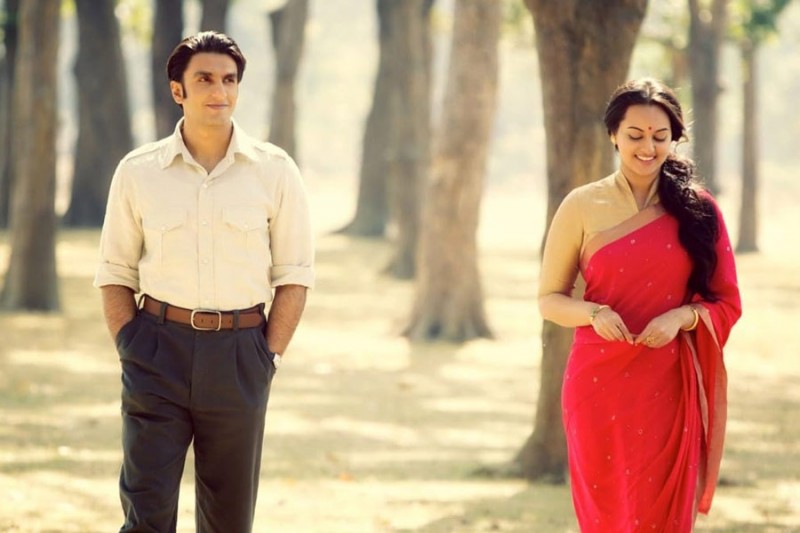
In the world of filmmaking, the setting, time period, and context in which a narrative unfolds frequently determine the effectiveness of storytelling. The 2013 film "Lootera," which was directed by Vikramaditya Motwane, is a work of art that masterfully conveys the essence of love, sacrifice, and redemption against the backdrop of 1950s India. The movie's original plot, which was originally supposed to take place in the present, underwent a significant transformation during development, which many people might not be aware of. This article explores how "Lootera" was given new life by director Vikramaditya Motwane's choice to set the movie in the 1950s rather than the present, giving the audience a memorable experience.
Prior to taking on its final form, "Lootera" was originally intended to be a story set in the present. The original script probably explored themes of love, betrayal, and the human condition, but Vikramaditya Motwane, the director, felt that the film's modern setting posed difficulties that would prevent it from making the kind of impact on the audience that he had in mind.
Vikramaditya Motwane had a realization as he was first crafting the tale. He recognized that "Lootera" was a study of nostalgia and the passage of time in addition to being a story of love and sacrifice. Simply put, the modern setting would not be appropriate for these themes. Motwane understood that in order for the movie to effectively convey these feelings, it required a historical setting—a time when it was possible to convey the weight of regret, nostalgia, and a bygone era.
Vikramaditya Motwane set out on a transformational journey for "Lootera" with this fresh understanding. He bravely decided to change the 1950s rather than the present-day setting of the movie, making it a period romance. This change affected the movie's plot, character dynamics, and aesthetics on a fundamental level. It wasn't just a cosmetic change.
The 1950s had a cultural landscape that contrasted tradition and modernity, as well as vintage elegance and charm. Following its independence, India underwent a lot of changes, and this period of change made the ideal setting for the story of "Lootera."
Filmmakers had a wide range of visual options to choose from during the 1950s, which contributed to their strong visual aesthetic. The atmosphere of the time was expertly re-created in the movie's costumes, sets, and cinematography. Viewers were transported to a different era by the film's eye-catching visuals, which included sepia-toned frames and accurate period details.
Nostalgia and Longing: "Lootera" was able to explore themes of nostalgia and longing in depth and authenticity because of its 1950s setting. The audience related strongly to the characters' yearning for an era that had passed them by because it reflected the general desire for a more carefree time in history.
Cultural Significance: The story's cultural significance was enhanced by the movie's post-independence India setting. The story gained a deeper level of complexity and relevance as the Zamindari System and the sociopolitical shifts of the era merged into it.
Character Dynamics: The characters' interactions and the change in era were both impacted. Both Ranveer Singh and Sonakshi Sinha's characters, Varun Shrivastav and Pakhi Roy Chaudhary, went beyond being simply modern people dealing with modern problems to becoming products of their era, with personalities and decisions that reflected the values and norms of the 1950s.
An important turning point in the development of the movie was when Vikramaditya Motwane decided to make "Lootera" into a historical romance. It necessitated extensive rewriting, character motivation changes, and meticulous historical accuracy. Every element of the movie, from the costumes to the music, which expertly infused the storytelling with the spirit of the 1950s, showed the filmmaker's dedication to the new vision.
The film's captivating score by Amit Trivedi, which melds with the historical setting and gives the story emotional depth, is one of its most notable aspects. Songs like "Sawaar Loon" and "Zinda" bring back fond memories by encapsulating the feelings of the time and the characters.
When it was first released, "Lootera" won a lot of praise from critics for its portrayal of the 1950s era, performances, and storytelling. It made an enduring impression on Indian cinema, bearing witness to Vikramaditya Motwane's creative vision and his readiness to take a risk that propelled the picture to a higher level of artistic excellence.
"Lootera" is more than just a historical romance; it takes the viewer on a journey through emotions, nostalgia, and everlasting love. The masterful decision to switch the time period of the movie from the present to the 1950s ensured that it would have a profound emotional impact on viewers and leave them with a sense of longing, beauty, and the enduring power of love.
"Lootera" is proof of the transformative potential of a filmmaker's vision and the significance of picking the appropriate time period and location to tell a story. "Lootera" was given new life by Vikramaditya Motwane's choice to set the movie in the 1950s rather than the present, giving it a nostalgic, culturally significant, and emotional depth that would not have been possible in a modern setting.
A testament to the magic that can occur when a filmmaker recognizes the need for change and has the courage to embrace it is the film's impact on audiences and its enduring legacy in Indian cinema. "Lootera" captures the essence of nostalgia, memories, and the beauty of a bygone era. It is more than just a period romance; it is a timeless love story that transports viewers to a different era.
Leading actors invest 47.82 crore in Andheri office buildings
Madhuri Dixit Refused Amitabh Bachchan's Film Due to Director's Demand for Nude Scenes
From YouTube to Silver Screen: Jitendra Kumar's Phenomenal Journey